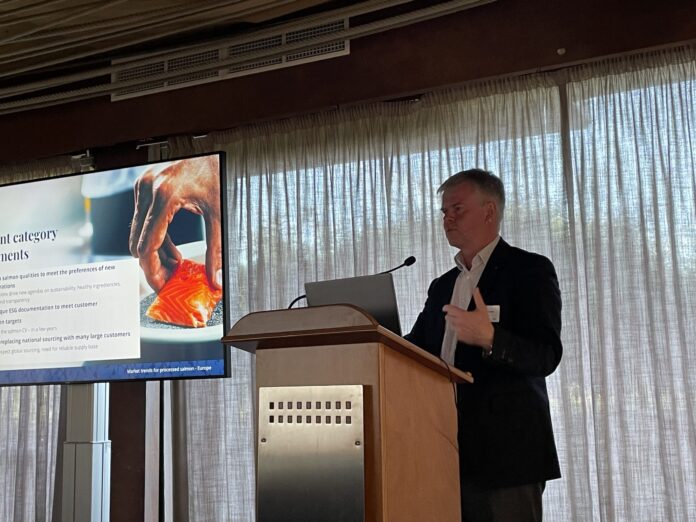Very few players globally sell more salmon than Milarex.
Former Vice President at Marine Harvest (later renamed Mowi), Thomas Farstad leads the five-year-old Polish seafood giant.
“We had sales of 300 million euros in 2021, and we expect further growth in 2022. We produce more than 100 million portion packs annually,” he said, adding that the company has subsidiaries in Germany, France and North America.
“We run one processing factory, located in Poland,” Farstad stated during a seminar organized by DNB and FishPool at the exclusive conference hotel Miramar, on a hill above the port of Barcelona.
Underlying
In a market characterized by an explosive price development, Farstad and Milarex are seeing several underlying trends in the salmon market:
“Smaller portion packs, more conveniece products, the more convenient the better, and ready meals. We also see variations in the ready-to-eat category, including more complex processing products,” he outlined.
“There is a market out there that we do not meet the demand for,” Farstad said.
Extreme
But not all market segments rise in value. Farstad sees a declining trend in ASC certification, large portions and mature products, such as 200 grams of cold-smoked salmon or fresh portions. “Here you need a promotion to increase sales,” he explained.
2022 has so far shown an extreme market development, where the salmon price has doubled in four months.
“Is there now a lasting shift in the salmon market?” Farstad asked.
“We see a new world order, an unstable political arena and commodity inflation. Being able to secure supply lines will become more important,” he said.
“Rising interest rates will weaken consumption, and reduce the risk appetite of processors, who are obviously in a pinch with current commodity prices,” Farstad added.
Falling margin
Farstad is trying to cool down the biggest price optimists by pointing out that after 2016, salmon prices fell for five consecutive years as falling margins in the processing market resulted in falling spot prices.
At the same time, Farstad sees what he calls “value opportunities”:
“One possibility is differentiation. There is a willingness to pay an increased price, but also opportunities to coordinate the supplies of goods – between the fish farmers and the processing companies. Sourcing goes more towards global sourcing with large customers,” he claimed.

